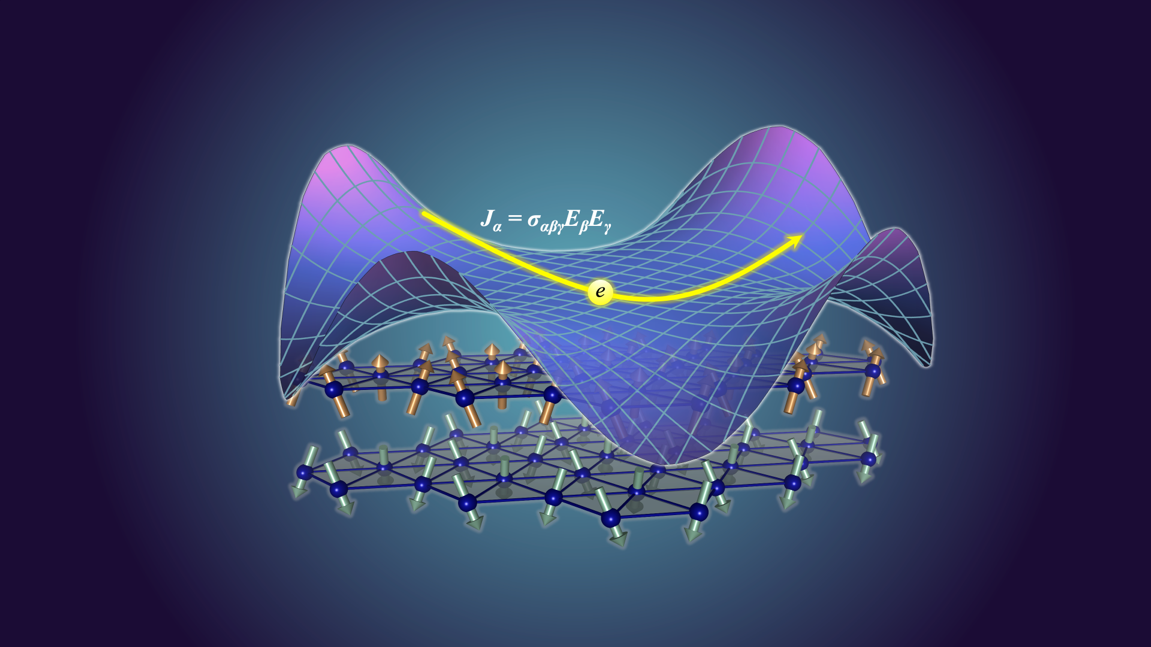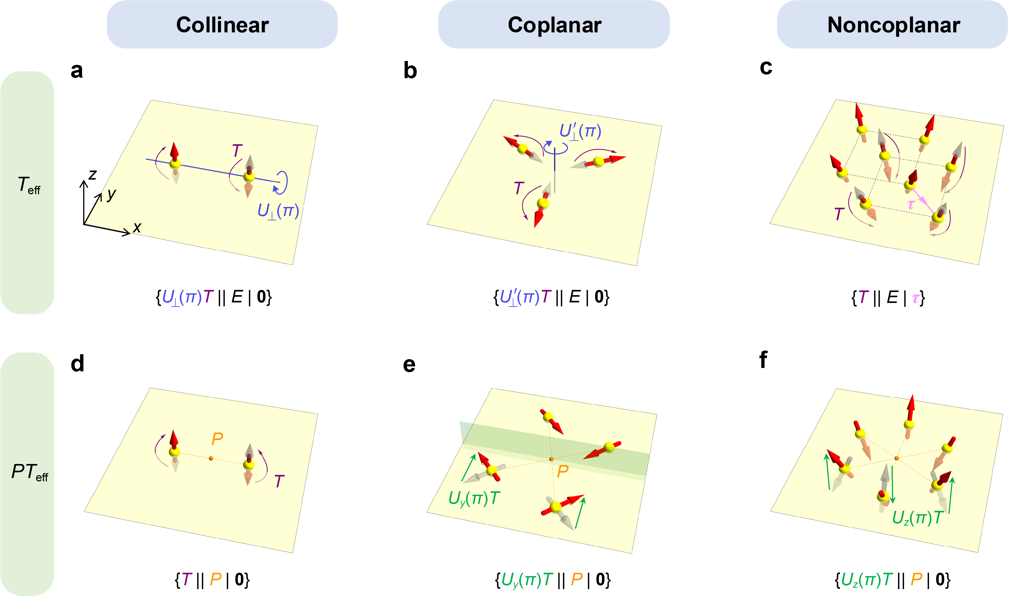Nonlinear transport effects, as one of the frontier research directions in condensed matter physics, are not only fundamental to the functionalities of novel electronic devices but also serve as key methods for probing intrinsic quantum geometric properties of materials. Recent studies have shown that nonlinear transports allow for the efficient detection of the Néel vector orientation in antiferromagnetic materials, laying the foundation for antiferromagnetic spintronics.

To address these issues, Professor Qihang Liu’s research group from the Department of Physics at the Southern University of Science and Technology (SUSTech) has made progress in understanding the correlation between magnetic geometry and quantum geometry, and its role in driving nonlinear transport in antiferromagnetic materials.
Their results, entitled “Magnetic geometry induced quantum geometry and nonlinear transports”, have been published in the journal Nature Communications.
The group proposed intrinsic nonlinear transport effects directly driven by magnetic geometry without the spin-orbit coupling effect. Based on the recently developed spin space group theory (Phys. Rev. X 12, 021016 (2022); Phys. Rev. X 14, 031038 (2024)), they decoupled the spin degree of freedom from lattice symmetry, constructing a link between real space magnetic geometry and momentum space quantum geometry.
They found that although magnetic materials lack time-reversal symmetry, the arrangement of magnetic moments in collinear and coplanar antiferromagnets allows for specific spin rotations combined with time-reversal, forming an effective time-reversal symmetry Teff (Figure 1). This suppresses second-order transport effects arising from inverse mass dipole and quantum metric dipole, allowing only the Berry curvature dipole to contribute to second-order transport. Furthermore, if the magnetic geometry possesses a combined symmetry of spin rotation, spatial inversion, and time-reversal, an effective space-time inversion symmetry PTeff emerges. This symmetry prohibits the contribution of the Berry curvature dipole but retains second-order transport effects induced by inverse mass dipole and quantum metric dipole.
In addition to identifying these two typical effective symmetries, the researchers also established a direct mapping rule between general spin-space symmetries of magnetic geometry and the nonlinear transport tensor. This mapping enables the prediction of intrinsic nonlinear responses in materials without time-consuming numerical calculations.

Figure 1. Effective time-reversal symmetry (Teff) and effective space-time inversion symmetry (PTeff) in magnetic geometry
For experimental realizations, the group screened out 803 non-centrosymmetric antiferromagnets, each verified by neutron scattering experiments, from over 1,700 antiferromagnetic materials in the MAGNDATA database. Further diagnosis of their magnetic geometric symmetries led to the establishment of a database containing 260 candidate materials for magnetic geometry-induced nonlinear transports (Figure 2). Approximately one-third of non-centrosymmetric antiferromagnetic materials exhibit nonlinear transport effects driven by magnetic geometry. This finding challenges the previous consensus that nontrivial transport is generally driven by spin-orbit coupling.
Among the selected candidates, the database includes 120 collinear antiferromagnets and 71 coplanar antiferromagnets that can exhibit geometric nonlinear effects induced by Berry curvature dipoles, as well as 69 non-coplanar antiferromagnets that can display at least one type of geometric nonlinear effects driven by quantum geometry. Notably, 21 materials simultaneously demonstrate nonlinear transport induced by three mechanisms: inverse mass dipole, Berry curvature dipole, and quantum metric dipole. This database has been made publicly available through the group’s self-developed interactive online platform, FINDSPINGROUP (see related link below).

Figure 2. Overview of quantum-geometry-induced second-order transport effects and the antiferromagnetic materials database
Through first-principles calculations and nonlinear transport theory, the researchers validated the magnetic geometry–quantum geometry correlation in representative materials. For instance, in the alternating magnet VNb3S6, they calculated second-order transport effects contributed by Berry curvature dipole without the need for spin-orbit coupling. Meanwhile, in the room-temperature non-coplanar antiferromagnet CrSe, they obtained quantum metric dipoles induced by complex magnetic geometry and the corresponding second-order transport effects.
Numerical calculations show that the strength of the nonlinear transport effects can be comparable to, or even an order of magnitude greater than, those induced by spin-orbit coupling in some materials. Notably, the nonlinear conductivity contributed by quantum metric dipole in CrSe is an order of magnitude larger than that in the magnetic topological insulator MnBi2Te4 solely caused by spin-orbit coupling (Nature 621, 487 (2023)).
Qihang Liu’s group also introduced the concept of unconventional magnetism to describe magnets that combine the advantages of both ferromagnets and antiferromagnets (Nat. Phys. 21, 329 (2025)). By applying spin space group theory, this work reveals for the first time a direct correlation between magnetic geometry and quantum geometry, deepening the concept of unconventional magnetism and providing more candidate materials for antiferromagnetic spintronics applications.
The first authors of the paper include Ph.D. students Haiyuan Zhu and Jiayu Li from the Department of Physics at SUSTech (Jiayu Li is currently a postdoctoral researcher at The University of Hong Kong). Other collaborators include Associate Researcher Xiaobing Chen from the Quantum Science Center of Guangdong-Hong Kong-Macao Greater Bay Area, and master’s student Yutong Yu from the Department of Physics at SUSTech. Professor Qihang Liu is the corresponding author, and SUSTech is the primary affiliation of the paper.
Paper link: https://www.nature.com/articles/s41467-025-60128-2
FINDSPINGROUP link: https://findspingroup.com/
To read all stories about SUSTech science, subscribe to the monthly SUSTech Newsletter.
Proofread ByAdrian Cremin, Yifei REN
Photo ByDepartment of Physics